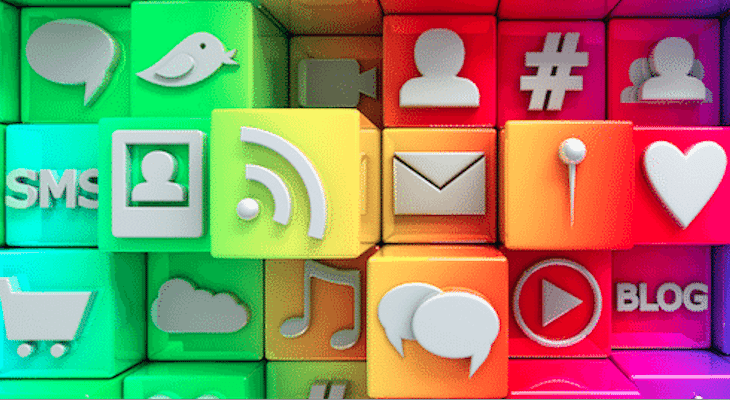For brands to succeed, they need to know how they are perceived on social media. They also need to know how to respond to and analyze their data from social media interactions, mentions, and other activities. There are two different ways to measure and respond to social media activity: social listening and social monitoring.
Both approaches are important, but they’re used for different goals and leverage specific tools. Today, let’s break down social listening vs. social monitoring in detail.
What is social monitoring?
Social monitoring is the small-scale, micro-focused type of active social media data collection. It involves identifying, collating and collecting brand mentions and responding to them.
Here’s an example:
- A brand tasks a few social media experts with checking for @ mentions of the brand name on Twitter.
- The employees then respond to some @ mentions, depending on the content and the attitude of the Tweeter.
Put another way, social monitoring means collecting data from social media channels, primarily by watching out for mentions of your brand’s name or products. Then your team gathers more personalized, one-on-one data by responding to customers online.
What is social listening?
In contrast, social listening is the large-scale, macro-focused counterpart for social media data collection. Social listening can be used to inform your broader marketing strategy and collect data from individual customers. In most cases, your social media team does not respond to aggrieved customers directly.
Here’s an example:
- Your social media experts gather data from individual customer interactions and organize them to inform broad conclusions. They may look at all of your brand’s @ mentions on Twitter for the last quarter, for example, to determine how people currently think about your brand and how it has changed or may change over time.
The differences between monitoring and listening
Social monitoring means gathering data on a small scale, sometimes from online interactions with consumers. Social listening means gathering data on a large scale, usually from collecting a lot of smaller data points and putting them together to identify statistical or behavioral trends. Let’s take a closer look at the major differences between social monitoring and social listening.
Micro vs. macro
As mentioned above, social monitoring is all about focusing on the micro side of things. Social media managers or employees will interact with customers on a one-on-one basis.
A typical example is a social media manager responding to a customer who has a complaint on the company’s social media page. Alternatively, the manager may thank a customer for a glowing review.
Social listening means doing the opposite and focusing on the macro side of things. Social listening experts will pool various interactions or mentions across social media to paint a comprehensive picture of how customers interact with or feel about a brand.
Reactive vs. proactive
There’s also a difference in how both social media data collection approaches deal with problems.
Specifically, social monitoring involves reacting to announced customer issues. For instance, if a customer says they received a broken product, a social media manager may reply to the post and offer to ship a free replacement.
Social listening is proactive. It involves analyzing a lot of data points to anticipate how customers may:
- Respond to a new brand announcement, like a price increase.
- React to a competitor releasing a new product.
- React to an upcoming press release about the company’s new eco-friendly initiative.
Both approaches are important, but they solve problems in distinct ways. Social listening attempts to fix potential vulnerabilities before they become issues.
Short vs. long term
This also affects the time span for both social data collection strategies. For example, social monitoring is all about short-term customer pleasure and retention. It may emphasize helping the customers the company has now.
Social listening also focuses on current customers, but it is more concerned with ensuring they remain satisfied for months and years to come. Social listening also emphasizes drawing new customers to the brand through long-term brand awareness and marketing campaigns.
Manual vs. automated
Social monitoring and listening also differ in terms of their automation levels. Social monitoring is usually manual. A handful of employees will interact with customers on social platforms like Facebook and Twitter.
On the other hand, social listening is largely automated as it is very hard to do manually. Social listeners will use automated tools to gather tons of data, collect it, and then only interact with the datasets when it is time to analyze them.
Goal differences
Based on what we’ve discussed above, you should see the main differences between the business goals of social monitoring and social listening.
Social monitoring is all about business goals like:
- Making sales via sending customer traffic from social media platforms to sales pages or landing pages
- Responding to customer comments
- Performing customer service/support, especially to retain sales or boost brand reputation
The business goals of social listening are:
- Planning for future brand evolution.
- Boosting brand awareness.
- Learning customer sentiment or satisfaction levels.
- Identifying current or upcoming problems with products or services.
- Discovering industry trends and how they may affect current brand plans.
How to use social listening and social monitoring effectively
Both social listening and monitoring are important elements of social media analysis and interaction. Both may be useful for distinct tasks. Here are some examples of how your business can leverage these strategies effectively.
Use social monitoring to keep customers.
For example, you can use social monitoring tactics such as responding to customer complaints on social media platforms to retain those customers. Say that a customer says that they plan to cancel their subscription to your hosting service. Your social media manager can then respond, find out the problem, and solve it to keep the customer for another three months.
Use social listening to fix issues ahead of time.
Social listening can be used to anticipate and solve issues coming down the road.
With social listening, your social media manager can determine that your customers don’t want the next product to be designed in a specific way. Then your social manager can speak to your product development team and make sure that the upcoming release is not designed in a way that would be contrary to customer expectations.
Use social listening to adjust for expectations and trends.
Similarly, social listening can be very valuable to help adjust your business plan according to customer expectations or upcoming industry trends. If, for example, the industry standard is to offer a 30 day trial for your software, social listening will tell you that you need to consider and plan for a 30-day trial for your new software release before you announce prices to your target audience.
Use social monitoring to make sales.
Social monitoring can also be used to help your business make sales. For example, a prospective customer or lead reaches your brand’s social media page. They interact with a social media employee, who directs them to your website’s landing page or sales staff. Thanks to this social monitoring interaction, you made an extra profit for the day!
Use social listening to track brand awareness.
Social listening can furthermore be used to track and even improve brand awareness. By tracking mentions on social media platforms, your social listening team can tell you:
- How many people are aware of your brand.
- Whether your target audience is likely to find your brand from target keyword searches.
- Whether you need to improve your brand awareness campaign.
- What the initial impressions people have of your brand are (i.e., positive or negative).
If you’re running a startup, measuring brand awareness is doubly important, so you know when to sell your company to investors.
Use social listening to measure customer satisfaction.
Lastly, social listening could be used to determine customer satisfaction with current product releases or upcoming events. Mentions often contain a lot of data, particularly whether customers think positively or negatively about your company.
With this information, you can potentially pivot your business plan if necessary and make changes before releasing a disastrous product or saying something inappropriate.
Summary
Both social listening and social monitoring should be important parts of your social media management strategy book. In the earliest days of your brand’s lifespan, social monitoring will likely be a little more important as you respond to your crucial first batch of customers. But as it grows, social listening will become even more important to evolve your company in a successful direction.






